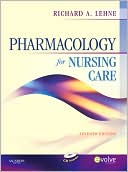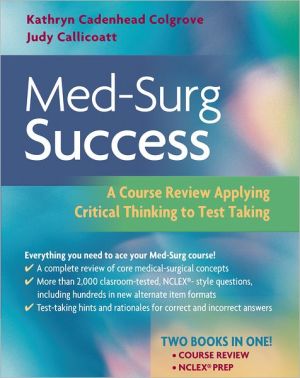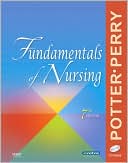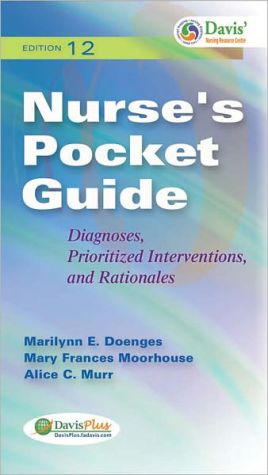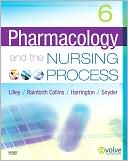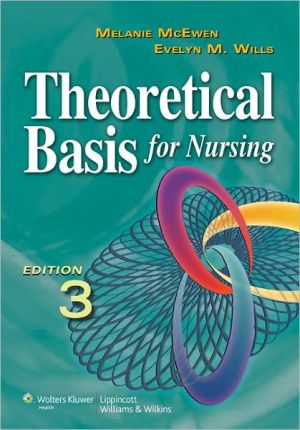Strategies for Theory Construction in Nursing
Completely updated in a new 5th edition, this book details the advances that have been made in theory development and demonstrate the continued relevance of theory to nursing practice. Chapters discuss concepts, statement, and theory development with recently published examples of theory strategies, emphasizing concept analytical work. Introductory chapters clarify the relevance of theory to nursing practice, while concluding chapters contain a greater emphasis on how theories can be tested...
Search in google:
Completely updated in a new 5th edition, this book details the advances that have been made in theory development and demonstrate the continued relevance of theory to nursing practice. Chapters discuss concepts, statement, and theory development with recently published examples of theory strategies, emphasizing concept analytical work. Introductory chapters clarify the relevance of theory to nursing practice, while concluding chapters contain a greater emphasis on how theories can be tested for validity and utility in practice. Features include: Recent theory development work being done by nurses; Emergent philosophical views that reflect increased diversity; International nursing theory development. Updated material through-out Preliminary Notes that engage the reader with a personal voice.
PrefacePart 1 Overview of Theory and Theory Development 1Chapter 1 Theory in Nursing: Past to Present 3Theory Development in Nursing: A Beginner's Guide 3A Historical Glimpse at Theory Development in Nursing as a Profession 4Evolution of Theory Development Metatheory to Practice Theory 6Population- and Domain-Focused Theories and Models 20Global Nursing Theory Development Issues and Efforts 23Summary 28References 28Additional Readings 38Chapter 2 Using Knowledge Development and Theory to Inform Practice 40Introduction 40Evidence-Based Practice and Practice-Based Evidence 42Nursing Informatics 47Nursing Practice Research and Theory Development 49Summary 51Practice Exercise 52References 52Additional Readings 54Chapter 3 Approaches To Theory Development Used in This Book 57Introduction 57Elements of Theory Building 58Interrelatedness of Elements 62Approaches to Theory Building 63Strategy Selection 64Interrelatedness of Strategies 66Summary 68References 68Additional Readings 69Part 2 Derivation Strategies 71Chapter 4 Concept Derivation 73Definition and Description 73Purpose and Uses 75Procedures for Concept Derivation 75Application of Concept Derivation to Nursing 78Advantages and Limitations 80Utilizing the Results of Concept Derivation 80Summary 81Practice Exercise 81References 83Chapter 5 Statement Derivation 84Definition and Description 84Purpose and Uses 87Procedures for Statement Derivation 87Application of Statement Derivation to Nursing 88Advantages and Limitations 90Utilizing the Results of Statement Derivation 90Summary 91Practice Exercises 91References 92Additional Readings 93Chapter 6 Theory Derivation 94Definition and Description 94Purpose and Uses 95Procedures for Theory Derivation 96Examples of Theory Derivation to Nursing 99Application of Theory Derivation to Nursing 99Advantages and Limitations 101Utilizing the Results of Theory Derivation 102Summary 102Practice Exercises 103References 103Additional Readings 104Part 3 Synthesis Strategies 105Chapter 7 Concept Synthesis 107Definition and Description 107Purpose and Uses 108Approaches to Concept Synthesis 109Procedures for Concept Synthesis 112Advantages and Limitations 113Utilizing the Results of Concept Synthesis 114Summary 114Practice Exercises 115References 116Additional Readings 118Chapter 8 Statement Synthesis 119Definition and Description 119Purpose and Uses 121Procedures for Statement Synthesis 122Advantages and Limitations 134Utilizing the Results of Statement Synthesis 135Summary 135Practice Exercises 136Self-Assessment Test of Introductory Statistics 137References 138Additional Readings 139Chapter 9 Theory Synthesis 140Definition and Description 140Example of the Use of Theory Synthesis Process 142Purpose and Uses 143Procedures for Theory Synthesis 144Illustrations of Theory Synthesis 147Advantages and Limitations 149Utilizing the Results of Theory Synthesis 150Theory Synthesis and Integrative Models and Theories 150Summary 151Practice Exercises 151References 152Additional Readings in Theory Development 153Part 4 Analysis Strategies 155Chapter 10 Concept Analysis 157Definition and Description 157Purpose and Uses 158Procedures for Concept Analysis 159Advantages and Limitations 169Utilizing the Results of Concept Analysis 172Response to Criticism of This Method 173Summary 173An Additional Example and Practice Exercise 174Practice Exercise 176References 176Additional Readings 178Chapter 11 Statement Analysis 180Definition and Description 180Purpose and Uses 181Steps in Statement Analysis 181Advantages and Limitations 189Utilizing the Results of Statement Analysis 189Summary 190Practice Exercises 190References 191Additional Readings 192Chapter 12 Theory Analysis 193Definition and Description 193Purpose and Uses 194Procedures for Theory Analysis 194Advantages and Limitations 205Utilizing the Results of Theory Analysis 206Summary 206Practice Exercise 207References 210Additional Readings 211Part 5 Perspectives on Theory and Its Credibility 213Chapter 13 Concept, Statement, and Theory Testing 215Introduction 215Concept Testing 217Statement Testing 220Theory Testing 222Summary 226References 226Additional Readings 228Index 230

